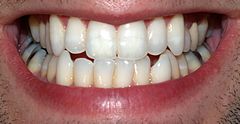 Microplastics, which are tiny pieces of plastic particles less than 5 millimeters in size, have now been found in human placentas. To find tiny plastic particles on both sides of the placenta (the baby's side and the mother's side), as well as in the placental membranes, is an alarming finding! Why is this occurring? And are they causing harm to the developing fetus?
Microplastics, which are tiny pieces of plastic particles less than 5 millimeters in size, have now been found in human placentas. To find tiny plastic particles on both sides of the placenta (the baby's side and the mother's side), as well as in the placental membranes, is an alarming finding! Why is this occurring? And are they causing harm to the developing fetus?
First, it is important to realize that we are surrounded by plastic in products that we use, and also in our environment. Eventually all plastic degrades into tiny pieces called microplastics and nanoplastics. These tiny plastic pieces are found throughout the world, including in the oceans and rivers, indoor air, and the food we eat and water we drink, especially bottled water. The particles get into us, and while some is excreted in the feces, they also get into our organs.
The Italian researchers examined small portions of 6 human placentas (from normal pregnancies) and found a total of 12 plastic particles in 4 of the placentas. The researchers said that all the particles were "pigmented" (colored), with 3 being tiny polypropylene pieces, and the other 9 could only be identified as pigments (e.g. from man-made coatings, paints, adhesives, cosmetics, and personal care products).
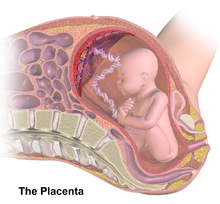
The researchers did not know how the plastic particles entered the mother's blood stream and so got into the placenta - whether it was from the mother's respiratory system (breathed in) or the gastrointestinal system (from ingested foods). They thought that differences in foods eaten and lifestyles might result in why four placentas had plastic particles and two others not.
A big concern with microplastics in humans, especially developing fetuses, is that they can contain substances that can act as endocrine (hormone) disruptors and so could cause long-term effects on human health. Will they have an effect on the developing immune system? At this point we do not know. We have many questions and studies are needed.
What should one do to lower exposure to plastic particles? There are many things one can do. Especially important is to no longer drink bottled water or other beverages in plastic bottles, or store or cook food in plastic containers. List of tips on how to lower exposure to plastics and the harmful chemicals in them - Avoiding Harmful Chemicals
Excerpts from The Guardian - Microplastics revealed in the placentas of unborn babies
Microplastic particles have been revealed in the placentas of unborn babies for the first time, which the researchers said was “a matter of great concern”. ...continue reading "Tiny Plastic Particles Found In Human Placentas"

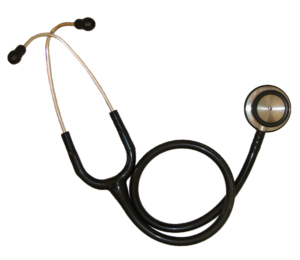 Americans think that their system of healthcare is the best in the world. Nope. Not even close. Not even for privileged white Americans. We're number 13 in a recent ranking of 13 countries.
Americans think that their system of healthcare is the best in the world. Nope. Not even close. Not even for privileged white Americans. We're number 13 in a recent ranking of 13 countries.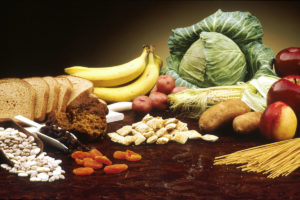 Vegan diets may be popular, but there is concern whether someone following a vegan diet can get all necessary nutrients from the diet and whether this impacts health in a negative way. This is because a person following a vegan diet avoids all animal foods - which means no dairy, no meat, no eggs, no honey, no fish, no shellfish, and no insects. This can mean difficulties in getting enough protein and some nutrients, for example choline (
Vegan diets may be popular, but there is concern whether someone following a vegan diet can get all necessary nutrients from the diet and whether this impacts health in a negative way. This is because a person following a vegan diet avoids all animal foods - which means no dairy, no meat, no eggs, no honey, no fish, no shellfish, and no insects. This can mean difficulties in getting enough protein and some nutrients, for example choline (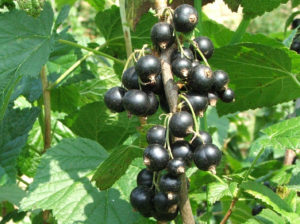 Every study I've seen in the past decade finds that eating berries has health benefits. A recent
Every study I've seen in the past decade finds that eating berries has health benefits. A recent 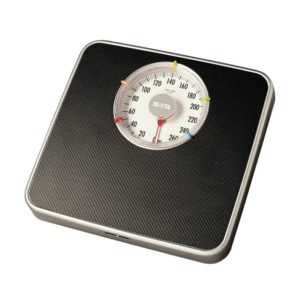 Being overweight increases the risk of developing diabetes. So a
Being overweight increases the risk of developing diabetes. So a  Study after study finds all sorts of negative health effects from exposure to pesticides, including cancers, endocrine (hormone) disruption, and neurological effects. Pesticide exposures can occur in the home, at work or school, in the air (drift), and in food and water. A
Study after study finds all sorts of negative health effects from exposure to pesticides, including cancers, endocrine (hormone) disruption, and neurological effects. Pesticide exposures can occur in the home, at work or school, in the air (drift), and in food and water. A 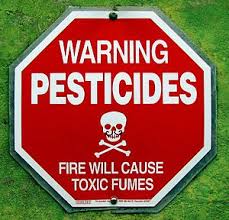 Many pesticides are neurotoxins. Dr. Ray Dorsey (publisher of
Many pesticides are neurotoxins. Dr. Ray Dorsey (publisher of  For many years we have viewed 98.6 degrees Fahrenheit (37.0°C) as the normal body temperature of a healthy adult. It turns out that is no longer true. The average body temperature has been falling for the last few decades. Studies find the temperature decrease in different parts of the world, in both rural and urban areas. Looks like it's somewhere between 97.5°F (California), 97.7°F (among the Tsimane in the Bolivian Amazon), and 97.9°F (United Kingdom).
For many years we have viewed 98.6 degrees Fahrenheit (37.0°C) as the normal body temperature of a healthy adult. It turns out that is no longer true. The average body temperature has been falling for the last few decades. Studies find the temperature decrease in different parts of the world, in both rural and urban areas. Looks like it's somewhere between 97.5°F (California), 97.7°F (among the Tsimane in the Bolivian Amazon), and 97.9°F (United Kingdom).